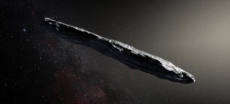[vc_row][vc_column][vc_column_text dp_text_size=”size-4″]NASA’s Perseverance rover has provided crucial data affirming the presence of ancient lake sediments, a result of water that once filled Mars’ expansive Jezero Crater, as outlined in a study released on Friday.
Ground-penetrating radar observations from the robotic rover validate prior orbital imagery and other data, reinforcing the hypothesis that certain regions of Mars were once submerged in water, potentially fostering conditions suitable for microbial life. The collaborative research, led by teams from the University of California, Los Angeles (UCLA), and the University of Oslo, was documented in the journal Science Advances.
Read more: Great Discovery Related To Dinosaur Tracks As Water Levels Drop
The study relies on subsurface scans obtained by Perseverance, a car-sized rover with six wheels, during its traverse across the Martian landscape throughout 2022. The rover moved from the crater floor to an adjacent area displaying braided, sedimentary-like formations reminiscent of Earth’s river deltas when viewed from orbit.
The RIMFAX radar instrument on the rover facilitated soundings beneath the Martian surface, providing a cross-sectional perspective of rock layers reaching a depth of 65 feet (20 meters). UCLA planetary scientist David Paige, the paper’s lead author, likened this view to examining a road cut. These layers present compelling evidence of waterborne soil sediments deposited at Jezero Crater and its delta by a contributing river, mirroring processes observed in Earth’s lakes. The findings reinforce the notion that Mars, which is presently cold, arid, and seemingly lifeless, was once warmer, wetter, and potentially habitable.
The study anticipates closer examination of Jezero’s sediments, believed to have formed around 3 billion years ago, through samples collected by Perseverance for future transportation to Earth. Despite initial surprises in the remote analysis of core samples near the rover’s landing site in 2021, where volcanic rocks were uncovered instead of expected sedimentary rocks, the studies are not contradictory. Even the volcanic rocks exhibited signs of alteration due to water exposure, leading scientists to posit that sedimentary deposits might have eroded over time.
The RIMFAX radar readings disclosed signs of erosion both before and after the formation of identified sedimentary layers at the crater’s western edge, suggesting a complex geological history. Paige emphasized the significance, stating that while the rover initially landed on volcanic rocks, the recent discovery of evidence for lake sediments on the delta aligns with the mission’s primary objectives in choosing this location. This dual revelation underscores the rover’s pivotal role in advancing our understanding of Mars’ geological evolution and potential habitability in its distant past.[/vc_column_text][/vc_column][/vc_row]











